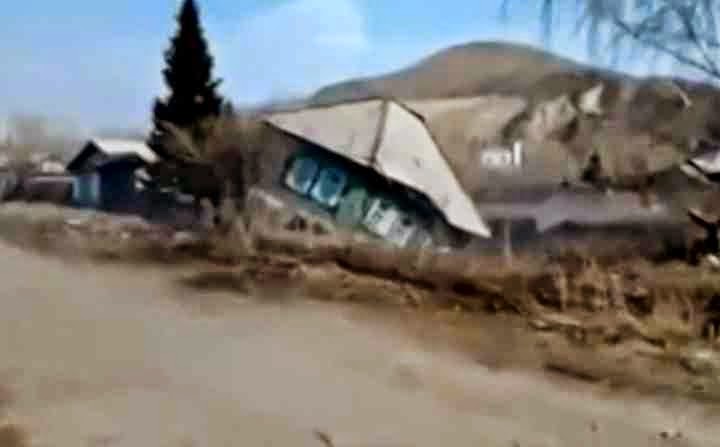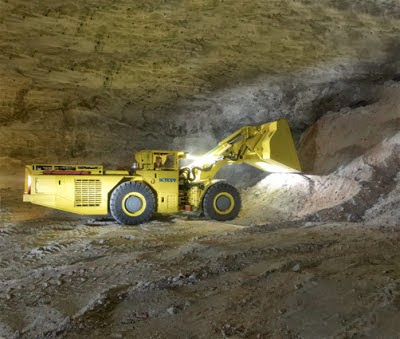Residents are expressing concern after a giant sinkhole, measuring 20 m by 30 m, opened up near an abandoned potash mine near Solikamsk in the Perm Region of Russia. The sinkhole was discovered on 18 November 2014, by workers at the Uralkali operated Solikamsk-2 Mine, which is connected to the now abandoned Solikamsk-1 Mine, where the hole appeared, following in inrush of saline water which flooded parts of the mine, causing workers to be evacuated and production to be temporarily halted.
The sinkhole at the Solikamsk-1 Potash Mine. Uralkali Press Service.
The sinkhole is about 3.2 km from the nearest residences, but geologists from Uralkali who have visited the site do not believe that it will grow sufficiently to be a threat, suggesting that it could grow to at most about 50 m by 60 m. However many residents have expressed concern about the event, as the Solikamsk-1 mineworkings are extensive in the area, and believed to underlie much of the town.
The Solikamsk-1 mine was abandoned in 2006, following a major water inflow, which led to a large sinkhole forming in the town of Berezniki. A second sinkhole opened up in Berezniki in 2010, closing part of the local railway network and a third in 2011, this time 137 m across and also connected to the disused mine and close to a residential area.
Sinkholes are generally caused by water eroding soft limestone or
unconsolidated deposits from beneath, causing a hole that works its way
upwards and eventually opening spectacularly at the surface. Where there
are unconsolidated deposits at the surface they can infill from the
sides, apparently swallowing objects at the surface, including people,
without trace. Potash, a potassium salt, is readily soluble and can be dissolved quickly if water gains access to deposits, leading to the rapid formation of sinkholes. In the case of Solikamsk it is likely that the mine has served as a conduit for flood waters, enabling it to reach and rapidly erode a series of potash deposits, leading to the formation of giant sinkholes.
See also...
Six people, including five members of one family, have died after a sinkhole opened up in front of a car on a main road near the Crimean city of Simferpol, on the evening of Saturday 27 September 2014. The dead...
A house was swallowed by a giant sinkhole at Ridder in eastern Kazakhstan on Tuesday 3 April 2014. The hole, measuring roughly 50 m across and 110 m deep opened abruptly at about 2.30 pm, swallowing the home rapidly, though not so fast that three people inside the...
Three workers have died and another four needed to be rescued after a controlled explosion at a Kali & Salz (K+S) GmbH operated mine near Unterbreizbach in Thuringia at about 1.10 pm local time (about 11.10 am GMT) on Tuesday 1 October 2013, which released an undetected pocket of gas, creating a larger than...
Follow Sciency Thoughts on Facebook.
Six people, including five members of one family, have died after a sinkhole opened up in front of a car on a main road near the Crimean city of Simferpol, on the evening of Saturday 27 September 2014. The dead...
A house was swallowed by a giant sinkhole at Ridder in eastern Kazakhstan on Tuesday 3 April 2014. The hole, measuring roughly 50 m across and 110 m deep opened abruptly at about 2.30 pm, swallowing the home rapidly, though not so fast that three people inside the...
Three workers have died and another four needed to be rescued after a controlled explosion at a Kali & Salz (K+S) GmbH operated mine near Unterbreizbach in Thuringia at about 1.10 pm local time (about 11.10 am GMT) on Tuesday 1 October 2013, which released an undetected pocket of gas, creating a larger than...
Follow Sciency Thoughts on Facebook.




